Website sections:
Current section's content:
- You Can Manage and Program Creativity
- Creative Abilities and Creative Thinking Skills Management
- Briefly About CreativityModel Method Usage
- CreativityModel Method Usage Opportunities and End-User License Agreement
- Current Version of CreativityModel Method
- CreativityModel Method Version Changes
- CreativityModel Method Glossary
- CreativityModel Method Abstract
- Explanation of the Method's Component Parts and How the Component Parts Interact
- Explanation of How the Method's User Achieves Results
- CreativityModel Method - Generate Dots, Connect the Dots
- CreativityModel Method Usage Areas
- The Artist in You
- Growth of the Artist in You
- The Result Getter in You
- Applying the Result Getter in You
- About Choice Supported Creativity Usage
- The Problematic Side of Business Creativity
- Creativity Management and Business Creativity
- Sales CRM Software Development Example
- Why Does Creativity Management Matter and What Can You Do About This?
- Goal Oriented Creativity Management and CreativityModel Method
- Goal Oriented Creativity Management and Your Personal and Professional Life
- Teenager, Version 1 - Confusion
- Teenager, Version 2 - Life Management and Career Development
- Managers, Version 1 - Zigzagging Business Development
- Managers, Version 2 - Innovation Management and New Product and Service Development
- The President, Version 1 - Some of It Did Happen
- The President, Version 2 - Self-Expression, Conflict Resolution, Creativity and Leadership
- CreativityModel Method Development Background
- Further Development of CreativityModel Method
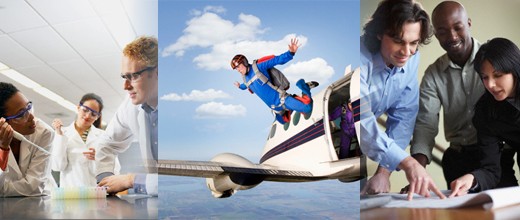





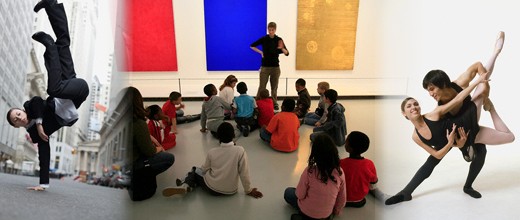

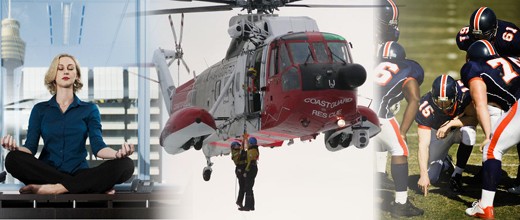
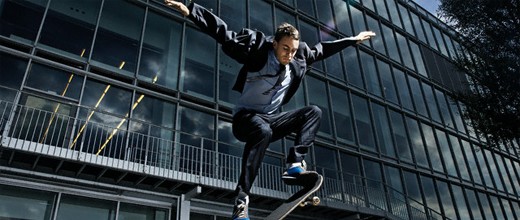




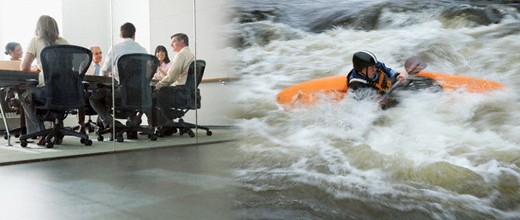





Managers, Version 2 - Innovation Management and New Product and Service Development
This article is the fifth part of a seven article series on neglecting versus using goal oriented creativity management principles.
- This series consists of an introductory article, and three sets of articles, each of which contain two versions:
- Teenager, Version 1 and Teenager, Version 2;
- Managers, Version 1 and Managers, Version 2 (current article); and
- The President, Version 1 and The President, Version 2.
- In addition, two software development related articles on this website form a somewhat similar pair.
- Sales CRM Software Development Example article describes a choice supported creativity driven decision making process in IT, in situations where goal oriented creativity should be used instead. What CRM Sales Software Is Right For You? article describes a goal oriented creativity driven software selection and development process.
These articles have a common thread that is related to CreativityModel Method usage. From a teenager to an employee, to president of a company or a country - CreativityModel Method usage principles are the same. So, your learning to use them is worth the effort, because you can use these creativity management skills throughout your life.
Both Version 1 and 2 are examples of projects that require goal oriented handling. Each Version 1 is an example of a scenario where goal oriented creativity principles should be used, but are not being used. This creates consequences. That's just the way life is, whether we like it or not.
Each Version 2 is the same scenario, except that this time goal oriented creativity is being used. The consequences are different, too.
- So, when you read this material, ask yourself, which version do you identify with more, Version 1 or 2?
- Do you recognize any of the people you know in these versions? In version 1 or 2?
- Both goal oriented creativity usage and self-expressive creativity usage can be learned and taught. Keeping this in mind, where are you now, and where do you want to be, as far as your own goal oriented creative thinking skills usage is concerned? Do you know anybody in your life who would benefit from improving his or her creativity management skills?
About This Article
This article addresses project management slightly differently than Teenager, Version 2 and The President, Version 2 articles do. The project that is described here focuses on innovation management, which is part of a bigger project that focuses on company's rebranding and new product and service development.
Unlike Teenager, Version 2 and The President, Version 2 articles, this article does not provide a direct counterpart to Managers, Version 1 article. The topics addressed here can provide effective solutions to the problems addressed in Managers, Version 1 article. However, in order to succeed, well-run innovation management projects have to be integrated with other aspects of company management and development. All of it requires leadership, managerial and development skills, commitment on different managerial levels and resources. So, innovation is not a solution on its own, but it can help to build paths to effective company development related solutions.
- From business management perspective, this article focuses on selected innovation management topics.
- From CreativityModel Method usage perspective, this article focuses above all on idea gathering and pooling related steps.
This article is especially long, because I am combining Managers, Version 1 material with exploring some innovation-related topics, looking at this material from CreativityModel Method usage perspective.
CreativityModel Method is a creativity management method. Successful creativity management contributes to success in areas where creativity is used. Accordingly, CreativityModel Method's principles can help to increase the quality of the outcome when these principles are used for business planning, business development, strategic planning, organizational development, innovation management, and new product and service development.
Goal oriented creativity usage is helpful when goals need to be set and achieved. Goal oriented creativity usage is largely about deciding what you want to achieve and plotting optimum paths that can take you there, so that sufficient room is also left for implementation related flexibility. Similarly, in a teamwork environment, goal oriented creativity usage is about setting goals and objectives and plotting optimum paths that can take the project participants to the goals and objectives, so that sufficient room is also left for participants self-expressive creativity usage and other necessary implementation related flexibility.
Goal oriented creativity usage does usually require at least some planning and research, but these efforts can improve the level of preparedness and that can pay off big time during the implementation.
Goal oriented creativity can be used for achieving results in areas that are familiar, and also in areas that are new and unfamiliar. Innovation management and new product and service development, the topics of this article, usually combine handling of both familiar and unfamiliar areas.
Contents
- Your Own Innovation Management and New Product and Service Development Projects
- Discovering and Learning CreativityModel Method Usage
- Innovation Management Meeting
- Employee Input Is Part of the Innovation Process
- Focus Is on Innovation, Not on Inventions
- What We Are Looking For
- What We Offer
- Innovation Integration Project Participation Steps
- Who Owns The Submitted Entries
- Employee Input and Innovation Integration Project
- Innovation Integration Project Objectives
- How the Innovation Integration Project Will Work
- Creativity Management Method That We Use and You Can Use As Well
- Business Creativity
- Creativity and Innovation
- Creativity Management Help that I Can Provide
- Factors that Affect the Outcome of Innovation and New Product and Service Development Projects
- What To Do Next
Your Own Innovation Management and New Product and Service Development Projects
This article describes some CreativityModel Method usage opportunities in innovation management and new product and service development related areas. Project management and business management areas are addressed only briefly and in a broad manner.
You can use and modify the information provided here for putting together your own innovation management and new product and service development projects.
Discovering and Learning CreativityModel Method Usage
The participants in this part, Managers, Version 2, are the same as in the previous part, Managers, Version 1, except that this time the entire company is involved.
John, company's Operations Director, has became interested in innovation management, and new product and service development. He has been reading books, doing Internet research and talking to different people about these business development areas. He considers his interest in these areas to be a good career development direction for him that can also benefit the company that he works for.
During one of his Internet researches, he found information on CreativityModel Method and its usage for personal creative thinking skills management, in business development areas and for business management purposes.
He found the original version of CreativityModel Method to be too abstract for his taste. At the same time, he liked that CreativityModel Method addresses both artistic creativity and business creativity usage separately and in combinations. He had felt for a long time, that while the two types of creativity are not the same, there has to be a connection and a manageable relationship between their usage.
He was also pleased to find out that he can indeed use CreativityModel Method in all the different professional and personal areas of his life, and that he can teach CreativityModel Method usage principles to his children as well.
John wasn't pleased about not being able to find any information on a convenient way to learn CreativityModel Method usage. However, he decided to learn CreativityModel Method usage on his own, by testing step-by-step in his life the information that was available on the websites that he found. He didn't mind the learning process, but wished that it had been more convenient.
After testing CreativityModel Method usage principles in his life, the concepts that initially had seemed very abstract, started making more and more sense. A picture started to emerge of how his own creative thinking skills work, and what areas he should improve by designing exercises for himself.
All of it reminded him going to the gym and doing exercises there, except that now he was training his thought processes, so that he could apply creativity management approaches more effectively and generate better quality results faster.
He found CreativityModel Method usage to be equally relevant when he was working on something alone, and when he was working with other people, or managing other people.
In his professional life, he found CreativityModel Method usage to be highly relevant to all the areas of business management and development, including his new areas of interest: innovation, innovation management, and new product and service development. In all of these areas results had to be developed through processes by combining goal oriented creativity usage with choice supported creativity usage.
John discussed this with Sally, their company's Marketing Director, and Ann, their Creative Director and Art Director, both of whom were professionally interested in innovation and new product and service development. Next John discussed the same topics with Andy, their IT Director as well. Together the managers assessed their company's business development needs and work environment, and came up with an idea that they discussed with other management team members, developed further, and then announced at a meeting.
Innovation Management Meeting
On a company meeting Mark, the CEO, makes the following announcement.
"You are all invited to participate in our company-wide Innovation Integration Project. Participants can submit new product and service ideas, and earn some additional paid time off for their efforts, make their work life more interesting, and even explore different career development directions in the process. Sally, Ann, John and Andy will take it from here and will go over some of the details of this project."
Employee Input Is Part of the Innovation Process
Sally greets the participants, and says, "We formed a small team of people for working on our company's rebranding and new product and service development related tasks. We may work with an outside consultant or a consulting company on this as well, but among the first steps we decided to get input from our employees. So, this is an opportunity for all of you to provide input that can influence our company's development and may create new career development directions for you as well.
We are looking for product and service ideas and suggestions that reflect your professional interests and opinions on the types of products and services that our company could provide.
Participation is strictly voluntary - no employee is obligated to provide any input on this. These employees who do participate can dedicate some of their work time to participation in this project. Further, for these submitted entries that we can actually use, you can earn up to a week of time off. In addition, depending on the submitted entry, other and much more extensive benefits may apply as well. Our intranet has more information on this."
Focus Is on Innovation, Not on Inventions
Sally continues her part of the presentation.
"From marketing perspective I want to stress that we decided to make the first stage of this Innovation Integration Project very inclusive. That is, we have a broad focus and will consider a wide variety of different concepts and options.
However, during the evaluation processes we will filter the inputs so, that we end up with a set of suitable projects. We are looking for innovations, not inventions. That is, we are looking for usable concepts and alternatives. We evaluate the input from our company's development perspective. What is or is not usable, is inevitably at least somewhat subjective. So, you can submit any entries that in your opinion match what we are looking for. John helps you to evaluate and to develop further your concepts.
John administers this project, and Mark, John, Ann, Andy and myself evaluate the submitted ideas and concepts. We may use other people's help in the evaluation process as well.
So, John will now describe you the operational aspects of this project."
What We Are Looking For
John greets the participants, smiles and says, "So, you have an opportunity to voice your opinions on what kinds of products and services this company should provide, and in return we offer you paid time off. This sounds like a pretty good deal to me - and I think it is a good project that can end up benefiting all the employees, whether they participate in this project or not. However, there's always some fine print involved. So, here's some of it.
- First of all, as Sally said, participation in this project is voluntary.
- Second, we are looking for specific product and service suggestions or concept descriptions. These can be products or services that other companies already offer but are new to our company, or they can be modifications of products or services that other companies already offer or our company offers, or they can be entirely new products or services.
- Third, we are looking for specific product and service suggestions that you professionally care about, would like our company to provide and would like to work on. The reason is that implementing something new requires quite a bit of resources, among them participants time and energy. Implementation can be a long and rocky road and achieving success is much more likely if the participants really care about the work that they do and about achieving the necessary objectives.
- Fourth, we are looking for suggestions for which a market already exists. So, as much as you can, please specify the intended target market and provide your estimate on the market size. We will evaluate that information further.
- Further, please specify what evidence do you have that the target market is interested in the product or service that you suggest. In addition, please specify whether or not your recommendation is an improvement over what other companies offer, and compare it to what is currently being offered.
- You can also submit new product or service concepts for which there is no target market yet, or for which you cannot identify the target market. We will evaluate these entries as well, but our limited resources may prevent us from working on implementing such entries.
Our website offers more information on these topics.
I will address this further in a few minutes, when I will describe to you a creativity management method that you can use."
What We Offer
"Next, I will describe briefly what we are offering to the participants.
You can all submit new product and service ideas. Over the next 8 weeks, you can use 2 workdays, that is, 16 hours of work time, for working on the suggestion or suggestions that you intend to submit. If approved, you can use more time for this purpose. I will provide more information on this shortly.
In return for usable product and service ideas we offer up to 5 days of paid vacation that you can use in addition to other vacation time that you have. Depending on the submission, other benefits may be applicable as well. For example, if you are submitting a patentable innovation, there are other benefits that we offer to you. Our intranet has more information on these topics."
Innovation Integration Project Participation Steps
"We are a relatively small company with limited resources. In all the areas, including innovation-related areas, we need to direct and control our resources, without creating bottlenecks or introducing layers of bureaucracy. Participation in the Innovation Integration Project has been set up keeping this in mind. If needed, we will modify these steps, so that they will be more effective.
- If you want to submit an entry to the Innovation Integration Project, the first step is to register yourself as a participant. Log in to our intranet. Under the Innovation Integration Project you will see Innovation Integration Project Registration Form. It's a short form where you have to describe your intended suggestion briefly, and indicate your agreement with the Innovation Integration Project rules.
- Your intended suggestion is the Innovation Integration Project entry that you intend to submit. There is a 1000 character limit for describing your intended suggestion. So, you have to be clear but concise there.
- Make sure that you read the Innovation Integration Project description before you sign the form.
- Fill in and sign the form electronically as is indicated on the website. Both myself and your supervisor will receive a copy of it.
- Your supervisor will then check off his or her consent to your participation. We don't expect there to be problems, but if you are working on an urgent project for a client, then of course we do not want your participation in this Innovation Integration Project to interfere with your primary work.
- Depending on your description of the proposed entry, I will either approve it or will talk to you about it. If your description is clear and understandable, and the scope of it is likely to fit into this project's timeline, I will approve it. If I have questions about it, I will talk to you about it. In that case I will contact you and will set up a meeting with you.
- Depending on the participants workloads and schedules, these steps can be completed within a day or two.
- If we need to clarify your intended entry, then that's what we will work on with you. I will describe during this presentation what kind of assistance I can provide.
- The first stage of this Innovation Integration Project lasts 8 weeks. During this time you can form teams, join a team, and if needed break away from a team and work alone. You can also join a team in the middle of this project, or start working on your own any time during this designated 8 week period of time. The rewards that you can earn do depend to some degree on when you start and whether you work in a team or on your own.
- Again, our intranet has more information in this, and also on how you can allocate the 16 hour period of working time that you can use for participating in this Innovation Integration Project."
Who Owns The Submitted Entries
"Please keep in mind that everything that is submitted to this Innovation Integration Project belongs to our company. Similarly, all the relevant discussions that we have and any information that we exchange during these discussions are considered to be part of the work that we all do for our company.
Depending on the nature of your entry, there may be other legal aspects involved as well. For example, if you submit something that can be patented, then there are other, additional steps involved - and also additional benefits that you may be entitled to.
If you have been working on something outside of your working here, for this company, and you want to secure your personal ownership of such a concept, then you have to do that separately. That is not part of this Innovation Integration Project."
Employee Input and Innovation Integration Project
"I will describe to you how we will manage the Innovation Integration Project, but before doing so I will address the role of employee input in this project.
With this project, we will provide opportunities for these employees who want to participate in innovation and new product and service development work beyond the tasks that they already handle. We do not require anybody to participate in the Innovation Integration Project. Further, we will integrate employee input with input from other sources and with the work of the innovation team that we formed. This approach can help us to lower the risk of failure and to increase the probability of success.
You, our employees, are the ultimate insiders into what our company does and what our customers need and want. I know how capable you are. So, if you use your expertise the right way, you can come up with very resourceful solutions.
At the same time I do not want to mislead anybody and to create an impression that the Innovation Integration Project is wholly dependent on employee input. That is not the case. Employee input is only one part of this project and it is the least predictable part of it.
We don't know, how much explicitly and directly usable input we will get from the employees. It may be the case, that we will not get any explicitly and directly usable input from the employees at all. I doubt that, but it is certainly a possibility. If that is the case, we will simply put more emphasis on using other parts of the Innovation Integration Project that I will describe you shortly.
However, I want to emphasize that even if we will not receive any explicitly and directly usable input, the employee input may work as a steering wheel in the company development process and that is rather important to all of us.
Every product and service takes the company development in a certain direction. This is important, because company development direction is related to company's branding, marketing and sales, operations and other business management areas, and to the expertise that all of us obtain when we implement the relevant processes. All of this affects our financial and professional success. The more viable is the direction chosen, the more successful we will be.
So, implicitly, with your input you also cast a vote for a direction that you propose. The more such votes there will be for a specific direction, the more likely it is that we will implement it as a company.
So, your input definitely does matter, even if we will not use it directly and explicitly.
This does not mean that you should not try to be innovative. If you suggest simply something that other companies already do, without adding any innovative suggestions to it, we will thank you and will note your input on our company's intranet, but that's it. You will not get any rewards beyond that. So, such input does matter, but it is not the primary objective of having the Innovation Integration Project."
Innovation Integration Project Objectives
"In the short run, the primary objective for this Innovation Integration Project is to work out our company's rebranding, and new product and service development related strategy. In the longer run, the objective is to integrate innovation with our operations and business management areas on an ongoing bases more effectively than what we have had in place so far.
As Sally mentioned, we formed an innovation team, a small team of people, for working on our company's rebranding and new product and service development tasks. Using a creativity management method that I will describe to you next, we can research and explore different options, develop further existing solutions and generate solutions from scratch.
In the short term
- If the employee participation in the Innovation Integration Project gives us promising results, we will use these results in the rebranding process as well. Even just one great idea that we feel works for us can be developed further into a sufficiently unique and scalable niche. Our product and service development efforts will then be in accordance with that direction.
- If necessary, our team will move in another direction, will pool alternatives, work out rebranding based on where we want to be as a company, and we will develop products and services that are in accordance with these goals. In the process we will work on our niche development as well.
In the longer term,
- Rebranding should produce results that work like a theme for the company. That is related to company's vision statement, strategy and goals that we will set. Of course, our marketing strategy and the products and services that we will provide will also be related to our branding.
- We are looking to make the Innovation Integration Project permanent in the format that works the best for us. What format that is, depends largely on the employee preferences. So, in this area, too, your input is important and helps to steer our company's development.
- We will continue to combine employee input and innovation team work. When needed, the innovation team members will work out most of the solutions. We may work with an outside consultant or a consulting agency on this as well.
Through combining input and efforts from different sources, our Innovation Integration Project will help us to both generate and manage new product cycles and new service cycles. This process will help to put in place a structure for continuous innovation and company development."
How the Innovation Integration Project Will Work
"Our continuous innovation structure will contain individual innovation cycles that are closely related to product and service development. The individual cycles and parts of this structure will be set up so, that they contain substantial amounts of implementation related flexibility. So, having a structure in place does not mean that everything will be written in stone, or that we will become more bureaucratic. Rather the opposite.
Further, continuous innovation and new products and new services do not mean that everything that we will do, use and offer will be invented by us. For our company that would be a rather impractical approach. In some areas we may come to market with radically innovative products and services. However, I expect us in most instances to make small improvements to products and services, so that we offer value to the customers from the perspective of our brand and niche, making the outcome and the value generated uniquely ours.
During the individual parts of the continuous innovation structure, that is, during the individual product cycles and service cycles, we will communicate our general objectives throughout the company.
For you, this will also mean that you will have more visibility into and clarity about where the company is going, and how you can contribute your efforts so that we move in the same general direction.
We want to make these processes as smooth as we can. Instead of dramatic and drastic changes that take people by surprise and confuse them, we are aiming at continuous changes but so, that the participants work through the innovation cycles by understanding where we as a company are going and why.
However, we will make changes and will tweak them in many areas - and that will be a continuous process. For example, we have people with great technical skills and we have people with great creative thinking skills, industry expertise, experience and abilities. We will test different ways how people with diverse skill sets can work together. We will gather feedback on participants preferences and will certainly take these preferences into consideration.
This will also mean that as a company, we will be the driving force of our own success, instead of trying to follow what others are doing in the marketplace.
This is the big picture. Of course, on a more detailed level, there's a lot more to it. Innovation is a complex topic.
The foundation for all of this is a creativity management method that we use. Using it, we can manage innovative processes from a single idea to a general concept, and also in the opposite direction, from a general concept to specific solutions. For example, we can use employee input, or just a fragment of an idea, and develop it further in the direction we want, including company branding. Similarly, we can generate new solutions based on branding or company's vision statement.
Now, combine this method's usage with insight and understanding of the customers needs and wants in specific areas, and you get yourself a pretty potent tool for generating business innovations.
Next, I will describe you the creativity management method that we use, but before doing so, I want to stress that neither our Innovation Integration Project nor this creativity management method is a guarantee of success. A lot of work will be required, including putting together and testing different alternatives. Similarly, learning from the mistakes and persistence will be needed.
Innovation and new product and service development are inherently risky. Right methodology helps to reduce the risks involved and to increase the probability of success, but it does not eliminate risks or probability of failure."
Creativity Management Method That We Use and You Can Use As Well
"We are using CreativityModel Method creativity management method for both organizing the Innovation Integration Project and for development of its parts. You can also use this method for managing your own creative thinking skills. The same principles apply in all the areas of your life, wherever you use this Method.
You can use CreativityModel Method at work, in your professional life and in your everyday life in situations where you need to use creativity. Using it will help you to generate results and also to avoid making some creative thinking and project development related mistakes.
CreativityModel Method is like a foundation for everything that you do that requires creativity usage. So, you can build on it and integrate it with your favorite project management principles and project specific rules that you follow.
At its core, this creativity management method is about differentiating between, and combining as needed, two types of creative thinking skills: self-expressive, artistic creative thinking skills, and goal oriented creative thinking skills. The better you will learn to manage these thought processes, the better results you can produce within your abilities, experience and expertise.
The self-expressive creative thinking skills are largely trial and error based and experimental in nature. They are part of what CreativityModel Method calls Choice Supported Creative Approach. You proceed by generating alternative options and by assembling the outcome and its structure from the components that appeal to you the most. So, the outcome is largely based on the choices that you make.
The goal oriented creative thinking skills are focused on setting and achieving goals. The Goal Oriented Creative Approach is based on setting goals and then working out a structure from the goals towards the starting point. The planned structure is implemented from the starting point towards achievement of the goals. That planned structure should contain implementation related flexibility, so that choice supported, self-expressive creativity can be used within the goal oriented structure."
Business Creativity
"There are many ways how you can combine the two creativity management approaches that I described briefly. So, when you use CreativityModel Method principles, you can use your goal oriented and choices supported creative thinking skills in many different combinations. The outcomes differ as well.
There are a few basic principles that you don't want to violate, because otherwise you will end up with less than optimum outcome.
When you apply creative thinking skills, then what type of structure you use for the project can make a big difference.
If you need to set and achieve goals or objectives, your project's structure should be set up so that it leads effectively and efficiently towards achievement of goals. During the implementation processes improvements and need based changes can be made to the initially planned structure. Similarly, choice supported creativity can be used any number of times within the goal oriented structure for generating outcomes, but the project's structure itself should not be based on trial and error and self-expressive choices that you or other participants make.
Similarly, if you do want to express yourself through what you do, you should not proceed by setting goals that you then achieve step-by-step. That approach can render the outcome stiff, formulaic, unoriginal and artistically unappealing.
In most instances in life we need to combine the two types of creative thinking skills. In business environment we need to use dominantly goal oriented creativity - even when we do creative work for our customers. That's at least my opinion. Yours may differ.
I see people getting into trouble when they ignore customer's perspective and customer's needs and wants, and instead create an outcome that is primarily based on their own self-expressive perspective. In my opinion the best outcome is usually based on exploring and understanding the customers needs and wants, and building a self expressive outcome on a structure that closely follows the customers needs and wants.
Similarly, I see some creative and otherwise very capable people getting into trouble when they manage teams and handle project management so, that they try to put together the project's structure by using their self-expressive, choice supported creative thinking skills and decision making habits. That creates confusion, so that the participants do not know who is supposed to do what and when.
Most business projects have goals or objectives, and, therefore, should be run in a goal oriented manner."
Creativity and Innovation
"The business creativity principles outlined above apply to innovation, innovation management and new product and service development as well. Goal oriented creativity helps to generate clarity about where the project is moving and what needs to be done. Of course, goal oriented creativity usage can be combined with the choice supported creativity usage. This is one of the things that I like about CreativityModel Method.
There are other things I like about this method as well. For example, using CreativityModel Method you can innovate in your own life, go where you haven't been before, and we can do the same as a company. This is very relevant to innovation and new product and service development.
The other aspect that I like is flexibility. You can start a project in any way you want, and you have a lot of flexibility with how you proceed with its development.
As I mentioned before, we can develop a single product or service idea into company branding concept, and then based on the branding generate additional product and service solutions.
Similarly, we can explore alternatives for where we want to be as a company, and then plot paths that can take us there. Of course, having expertise and experience are important, but by using goal oriented creativity principles, we can reasonably reliably move into areas that are new to us, and learn in the process. When we do the planning step-by-step from goals towards the starting point, it is more likely that we will gain a good understanding of what we need to do and what kinds of obstacles and problems we are likely to face during the implementation. That kind of preparation can make a big difference.
By the way, you can use the same principles in your professional life and your career development as well.
Another aspect that I like is that when we use CreativityModel Method principles, we are more likely to take customers needs and wants into consideration throughout the project development.
Often innovation management and new product and service development projects goals are either explicitly or implicitly related to meeting customers needs and wants. By doing planning in a goal oriented manner, we also put from the beginning more emphasis on customers needs and wants. In my opinion, that is a very positive feature.
I was not able to find any CreativityModel Method usage training materials that are convenient to use. So, initially it took me quite a bit of time to understand the formal version of CreativityModel Method. However, all things considered, learning to use CreativityModel Method is well worth the time and efforts.
The Innovation Integration Project page on our intranet has links to websites where you can find more information on CreativityModel Method creativity management method."
Creativity Management Help that I Can Provide
"I will complete this presentation by explaining briefly what kind of creativity management help I can provide to you within this Innovation Integration Project's framework.
I can help you to develop an idea into an actual innovation project, and as needed I can also help you to downsize an idea and convert it into a manageable project. Similarly, if your idea is only marginally related to what our company does, but you are interested in participating in the Innovation Integration Project, I can help you to develop your idea further towards a project that you can implement here, at our company.
- When we generate and develop further concepts in a choice supported manner, we pool, that is, gather concepts and take them apart, add, remove and modify their components and integrate components in new and different ways.
- Time and other resource needs for repetitive and planned work can be estimated reasonably well. The same does not apply to idea development. We don't want to do poor quality work. So, when we work on turning ideas into usable concepts and project steps, the bigger and the more complex is the project, the more difficult it usually is to determine ahead of time how much work and time are needed before we are able to put together sufficiently good quality solutions.
- In most cases we need to put in place a goal oriented structure for the project. The less familiar we are with the areas that we intend to work on, the more research and planning are likely to be needed. This preparation pays off during the implementation. Project participants can make changes to the planned structure later, during the implementation, especially if they find more effective ways for reaching individual milestone goals.
- However, the bigger are the changes to the project's structure that have to be made because of unanticipated resource usage needs, the more extra work is likely to be required for making sure that the rest of the project's structure stays in tact and project's goals can be achieved. Better planning helps to decrease the amount of such unexpected resource usage needs.
- As I mentioned before, by using CreativityModel Method principles you can go reasonably reliably into areas where you haven't been before. When you work on new product and service development this way, it is more likely that you end up with an invention, than with a usable innovation. So, by using CreativityModel Method principles you can go as far out into an unknown territory as you wish, but the further you go, the more time and other resources you are likely to need in order to turn an invention into an innovation.
- However, a lot is doable.
I can spend only a limited amount of time with the Innovation Integration Project participants. Whether it's a group of people or a single individual, most such meetings will be half an hour long and will take place infrequently. During each meeting we will evaluate the current state of your project and identify what you can do next. This means that the project participants will have to do most of the work during every stage of their project's development by themselves.
As the Innovation Integration Project participant, your innovation project will be supplemental work that you do in addition to handling your primary tasks. When you work this way, then putting in the needed efforts consistently, over a long period of time, takes a lot of interest in the project that you work on."
Factors that Affect the Outcome of Innovation and New Product and Service Development Projects
"Usage of the right combinations of creative thinking skills matters and contributes to success.
When we use our creative thinking skills we do so within our abilities, expertise and experience levels.
So, expertise, experience and insight into consumers needs and wants matter.
Passion and learning from the mistakes matter. Similarly, persistence and willingness and ability to get up and keep going when obstacles knock you down matter.
In most instances the project participants also need to find the optimum balances between the quality of the outcome, schedule and expenses.
So, there is a lot that affects the outcome of innovation and new product and service development projects. However, both participation in such projects development processes, and sharing the outcome with people who can benefit from it can be very rewarding in many different ways.
Further, for us as a company innovation is a necessity, because we cannot stand still while the rest of the world keeps moving.
To some degree, the same applies to many people's professional lives as well."
What To Do Next
John encourages the meeting's participants to check out the Innovation Integration Project webpage on their company's intranet site. After becoming familiar with the information found there, each employee can ask additional questions and decide, how he or she can contribute to the success of their company's Innovation Integration Project.

